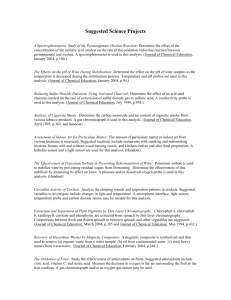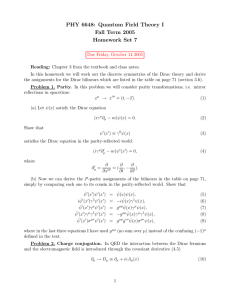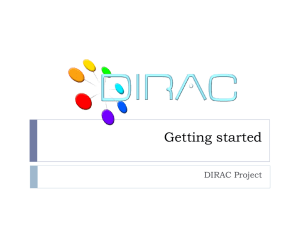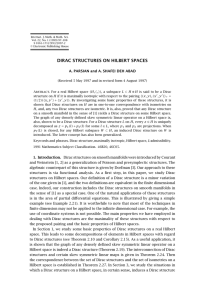poster
advertisement
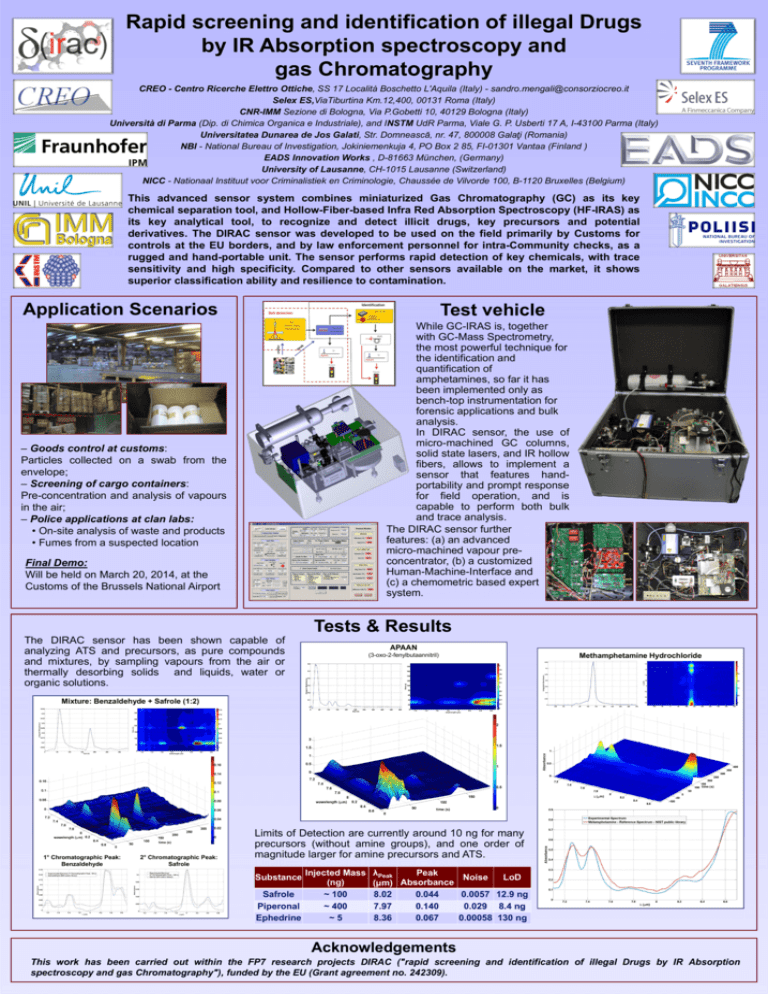
Rapid screening and identification of illegal Drugs by IR Absorption spectroscopy and gas Chromatography CREO - Centro Ricerche Elettro Ottiche, SS 17 Località Boschetto L'Aquila (Italy) - sandro.mengali@consorziocreo.it Selex ES,ViaTiburtina Km.12,400, 00131 Roma (Italy) CNR-IMM Sezione di Bologna, Via P.Gobetti 10, 40129 Bologna (Italy) Università di Parma (Dip. di Chimica Organica e Industriale), and INSTM UdR Parma, Viale G. P. Usberti 17 A, I-43100 Parma (Italy) Universitatea Dunarea de Jos Galati, Str. Domnească, nr. 47, 800008 Galaţi (Romania) NBI - National Bureau of Investigation, Jokiniemenkuja 4, PO Box 2 85, FI-01301 Vantaa (Finland ) EADS Innovation Works , D-81663 München, (Germany) University of Lausanne, CH-1015 Lausanne (Switzerland) NICC - Nationaal Instituut voor Criminalistiek en Criminologie, Chaussée de Vilvorde 100, B-1120 Bruxelles (Belgium) This advanced sensor system combines miniaturized Gas Chromatography (GC) as its key chemical separation tool, and Hollow-Fiber-based Infra Red Absorption Spectroscopy (HF-IRAS) as its key analytical tool, to recognize and detect illicit drugs, key precursors and potential derivatives. The DIRAC sensor was developed to be used on the field primarily by Customs for controls at the EU borders, and by law enforcement personnel for intra-Community checks, as a rugged and hand-portable unit. The sensor performs rapid detection of key chemicals, with trace sensitivity and high specificity. Compared to other sensors available on the market, it shows superior classification ability and resilience to contamination. Application Scenarios Test vehicle While GC-IRAS is, together with GC-Mass Spectrometry, the most powerful technique for the identification and quantification of amphetamines, so far it has been implemented only as bench-top instrumentation for forensic applications and bulk analysis. In DIRAC sensor, the use of micro-machined GC columns, solid state lasers, and IR hollow fibers, allows to implement a sensor that features handportability and prompt response for field operation, and is capable to perform both bulk and trace analysis. The DIRAC sensor further features: (a) an advanced micro-machined vapour preconcentrator, (b) a customized Human-Machine-Interface and (c) a chemometric based expert system. – Goods control at customs: Particles collected on a swab from the envelope; – Screening of cargo containers: Pre-concentration and analysis of vapours in the air; – Police applications at clan labs: • On-site analysis of waste and products • Fumes from a suspected location Final Demo: Will be held on March 20, 2014, at the Customs of the Brussels National Airport Tests & Results The DIRAC sensor has been shown capable of analyzing ATS and precursors, as pure compounds and mixtures, by sampling vapours from the air or thermally desorbing solids and liquids, water or organic solutions. APAAN (3-oxo-2-fenylbutaannitril) Methamphetamine Hydrochloride Mixture: Benzaldehyde + Safrole (1:2) 1° Chromatographic Peak: Benzaldehyde 2° Chromatographic Peak: Safrole Limits of Detection are currently around 10 ng for many precursors (without amine groups), and one order of magnitude larger for amine precursors and ATS. Injected Mass (ng) Safrole ~ 100 Piperonal ~ 400 Ephedrine ~5 Substance λPeak Peak Noise LoD (μm) Absorbance 8.02 0.044 0.0057 12.9 ng 7.97 0.140 0.029 8.4 ng 8.36 0.067 0.00058 130 ng Acknowledgements This work has been carried out within the FP7 research projects DIRAC ("rapid screening and identification of illegal Drugs by IR Absorption spectroscopy and gas Chromatography"), funded by the EU (Grant agreement no. 242309).



